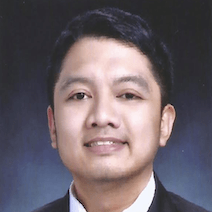SUMMARY
This is AI generated summarization, which may have errors. For context, always refer to the full article.
![[OPINION] Dengue fever and the language of medicine](https://www.rappler.com/tachyon/r3-assets/612F469A6EA84F6BAE882D2B94A4B421/img/1DC43A388BF440B78A7BB332988B20F0/language-medicine-20190926.jpg)

“Doc, ano po ulit ibig sabihin ng critical phase (Doc, what does critical phrase mean again)?”
Outside, the rain thundered on the cheap, deserted mall where the clinic was. She had carried her son through the rain, determined to have him checked after two days of blood counts revealed a malady that defined fear among generations of Filipino children – stories of classmates swelling up, blood bursting from their nostrils, dead in a few hours.
That kind of story persists today. “May namatay na po siyang kaklase eh (A classmate of his already died).”
In Cavite, the numbers are literally calamitous. Yet, amid the sensational stories of death is the struggle to explain the disease’s nature, that not all dengue cases warrant hospitalization, that it is the most dangerous when the fever is gone. As a student, I witnessed one pediatric consultant explain the natural history of dengue through an illustration – in English, of course – in the emergency room. (READ: DOH declared national dengue epidemic)
I blinked at her question. I unknowingly reverted to the medium of instruction used not just in medical school, but also in basic education, where students get penalized for speaking vernacular in English classes and places designated as “English Zones.”
She looked at me, her smallness magnified by the white coat I wore. She asked for an explanation she could understand. Far from being the meek submissive most patients have learned to become, something motivated her to cross that divide to tell me an important reality: Not everyone understands language the way I do. (READ: What is dengue, and why is it so widespread this year?)
Language is more than just words. It is the medium of thought. It is the highway through which we arrive at destinations within our minds, giving names to things, principles, and ideas. The typical story of most Filipinos is this: We were raised speaking vernacular at home and in the streets, only for school and society to hammer into us that speaking fluent English is the pinnacle of erudition and respectability. Using vernacular, say as a presenter in a medical grand rounds, is like being that Turkish astronomer who wore his native clothes in The Little Prince: a practical joke.
Yet most of our patients – and even some doctors – resist the complete acculturation of this colonial heritage. Our thoughts and conversations incorporate English terms in local syntax. We are exposed to mass media cluttered with untranslatable terms that merge itself into the canon of common slang, producing a mix of local tongues with English.
Grammatically and phonetically “correct” English, on the other hand, is still seen through the lens of the socioeconomic divide. Being an MD allowed me to cross that barrier deep enough to have a competent grasp in English. But it also placed me on the other side, assimilating concepts in a tongue not used by many patients. To them, the journey prematurely ends at the level of perception. English remains an alien world where they only gain rudimentary access. It is treated as a sign of ascendancy in a society oppressed by that invisible ghost: the ghost of inequality. (READ: [ANALYSIS] Dengvaxia scare: How viral rumors caused outbreaks)
“Ma’am, ang critical phase ang phase na nagsisimula sa ikatlo hanggang ika-apat na araw ng dengue, kung saan nawawala na ang lagnat,” I spoke, hoping communication would occur through careful structuring. (Ma’am, the critical phase is the phase that starts on the 3rd or 4th day of dengue, where the fever disappears.)
“Ito po ang babantayan natin: pagdurugo ng ilong, dugo sa dumi, pagmamanas, sakit ng tiyan, pagsusuka. Ilan lamang ito sa warning signs. Posible po siya maospital kapag lumabas ito,” I continued. (We should watch out for: nosebleeds, blood in the feces, swelling, stomachache, vomiting. These are just some of the warning signs. He could be hospitalized if he shows these symptoms.)
“Naku, ‘wag naman po sana doc (Oh no, I hope not, doc).” She shivered. I realized that her understanding of “critical phase” is based from the tagalog kritikal, which bears a more ominous connotation. Fear easily replaces nescience in the hearts of common folk. A buried question unearthed itself: Doc, is my son in critical condition?
“Sa ngayon, hindi po. Titignan ko po ulit siya bukas kasama ng panibagong blood count.” (At the moment, no. I’ll check on him again tomorrow along with a new blood count.)
They left the clinic after some more explanations. I’d see them again the following day, mother and son braving the monsoon, determined to see this through even if it was easier to pretend that everything was alright.
Language is a galvanizing force in society, especially one divided between those who glorify and benefit from ignorance, and those who challenge elitism, not with a knuckled fist and a slew of curses, but with a clear message that crosses barriers. This was what she did in her request for a better explanation: She refused to feel helpless.
They say medicine requires passion for learning. It is not enough. Medicine requires passion for learning so we can use it to empower patients afflicted not just with physiological disease, but with the greater societal ills that keep them sick. The language of medicine should connect with the language of the people. – Rappler.com
JM Deblois, 28 years old, is a physician currently training in family and community medicine.
Add a comment
How does this make you feel?
There are no comments yet. Add your comment to start the conversation.